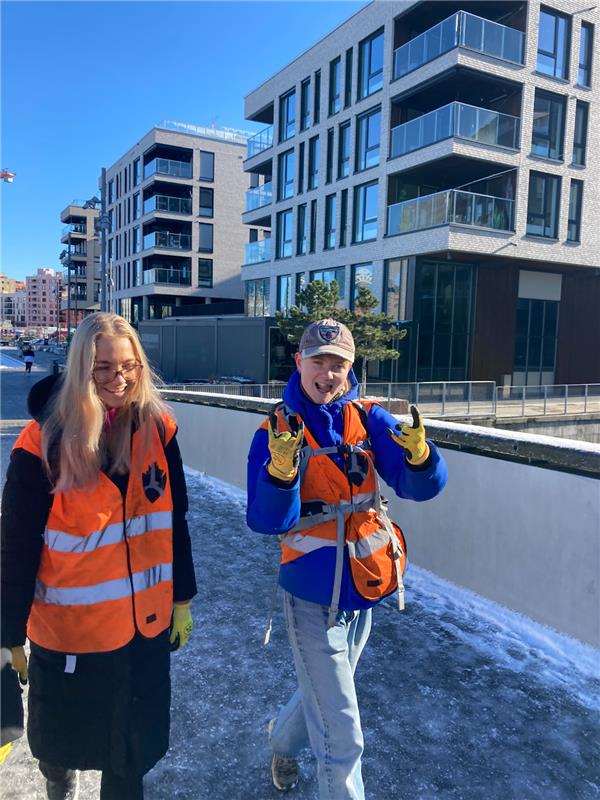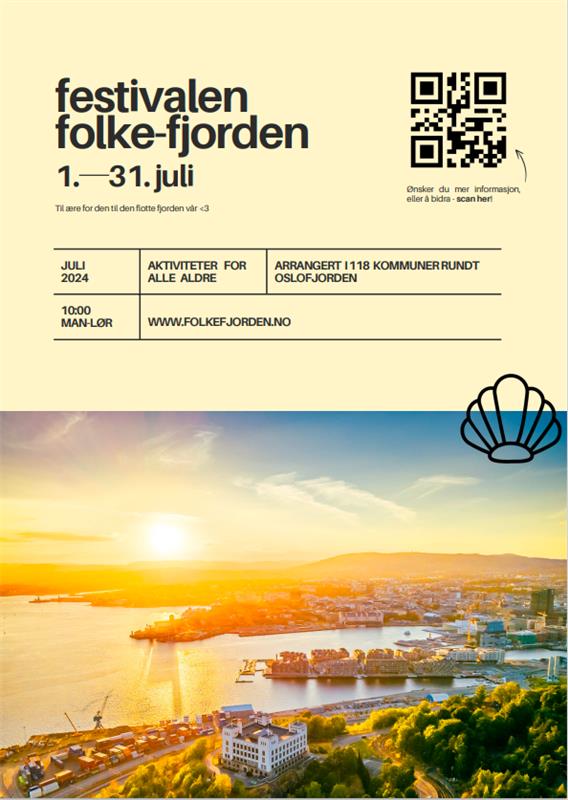At the Interdisciplinary Workshop, students from different disciplines work together to explore current and complex issues. Through the workshop, students learn to articulate, explain, and apply their own discipline, as well as learn about other disciplines. The goal is to develop interdisciplinary competence and gain experience working across different fields.
Over a weekend in March, students participated in the spring Interdisciplinary Workshop, focusing on a critical and often overlooked challenge in our local community: the environmental condition of the Oslo Fjord. Life in the Oslo Fjord has long been threatened by human interference, overconsumption, and pollution, which disrupts the ecosystem balance. To address this issue, we had two presentations.
The first presentation was given by Simon Hasselø Kline, a biologist and PhD candidate in aquatic biology and toxicology. He provided an overview of the situation and demonstrated how, over the years and generations, we have developed a kind of blindness to the increasing pollution of the Oslo Fjord.
Next, we welcomed Elin Helena Wyller Engkvist, a PhD candidate at the Centre for Development and Environment (SUM). She is involved in RIPARAGRO: Restoring Riparian Zones on Agricultural Lands, a new interdisciplinary research project exploring the areas between water and land, and human interactions with these zones.
Throughout the days, students learned more about the Oslo Fjord and its challenges. On the last day, we went down to Sørenga, where we became acquainted with Fjord Cleanup, a volunteer organization that cleans and collects waste along the waterfront and from the seabed of the Oslo Fjord.
Students were provided with gloves and picked up trash along the dock. In this physical and observant encounter with the Oslo Fjord, students got to experience the case in practice.

Interdisciplinary Competence
In smaller groups, the students worked based on a model for interdisciplinary research processes developed by Repko (2008). The model is a useful tool that gradually helps the groups to define a problem and develop an interdisciplinary solution.
The case itself was complex and challenging, yet also close and concrete. Throughout the days, it became clear that the knowledge base regarding the ecological challenges of pollution is well established. What is needed are strong initiatives to create increased awareness, engagement, and action among the population. There is a need for information and illumination of how the many different factors are interconnected and what we as a population can actively contribute.
As a task, the students were to develop something that could be conveyed with the criteria that it should be 1) realistic, 2) improve the environment/conditions/relate to the case, 3) activating, and 4) interdisciplinary.
One group wanted to develop a large interactive overview map of challenges, (possible) solutions, expert competence, and knowledge gaps. The map is to be in constant development and grow with new added knowledge about problems and solutions. The group aimed to address the lack of understanding of the connections and envisioned that the map could be designed for different levels to meet different target groups – both researchers, politicians, and the general population.
The other group wanted to address the lack of awareness of who has influence on and relation to the Oslo Fjord and proposed to organize a decentralized festival to create a sense of belonging to the fjord. They found that there are 118 municipalities that have influence on the fjord and that there are already political incentives for these municipalities to implement measures to improve the environmental condition of the Oslo Fjord. By naming the festival "Festivalen Folke-fjorden" (The People's Fjord Festival), they wanted to move away from an understanding that this is only an 'Oslo problem' and instead create a broader sense of belonging and positive relationships with the fjord. The image below shows the graphic invitation that the group created for the festival.

At the end of each day, the students answered reflection questions and expressed that it was both educational and challenging to work in an interdisciplinary way. They particularly enjoyed learning about other disciplines and found it useful to describe their own, as one student describes in their reflections: "I liked that we defined everyone's field of study and what they did, so we have a better understanding of them for future work."
Repko's (2008) steps to facilitate the interdisciplinary group work provided purpose and direction in the various phases of collaboration. The facilitators and students developed a shared language throughout the process, which helped to address challenges along the way. Additionally, the students utilized the 'brainwriting' method to support their collaboration and generate ideas together.
The students who have completed the interdisciplinary workshop are further invited to continue on the interdisciplinary ladder and participate in the interdisciplinary facilitator program.
Sources:
Repko, A (2008). Interdisciplinary Research; Process and Theory. Los Angeles: Sage
